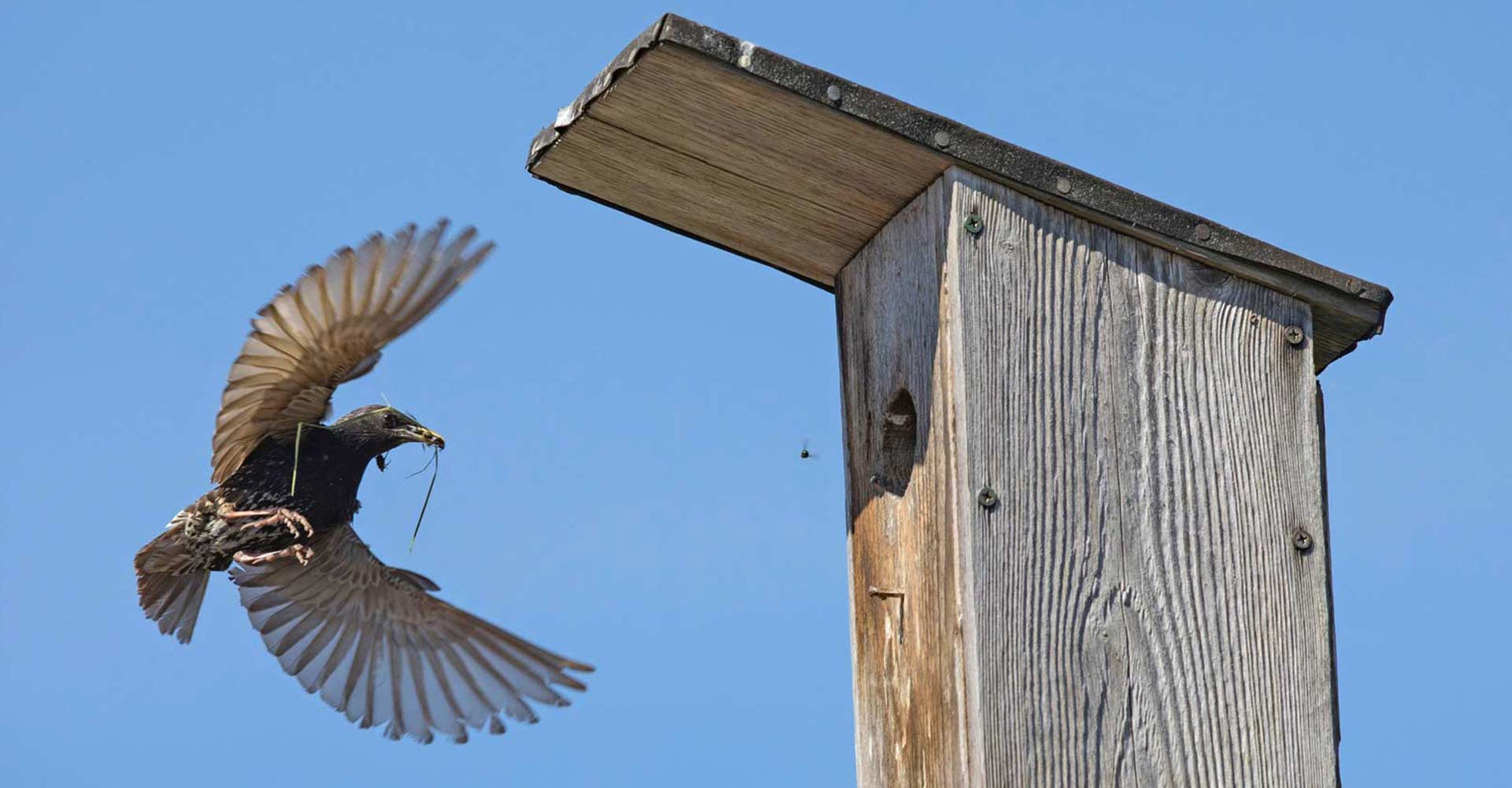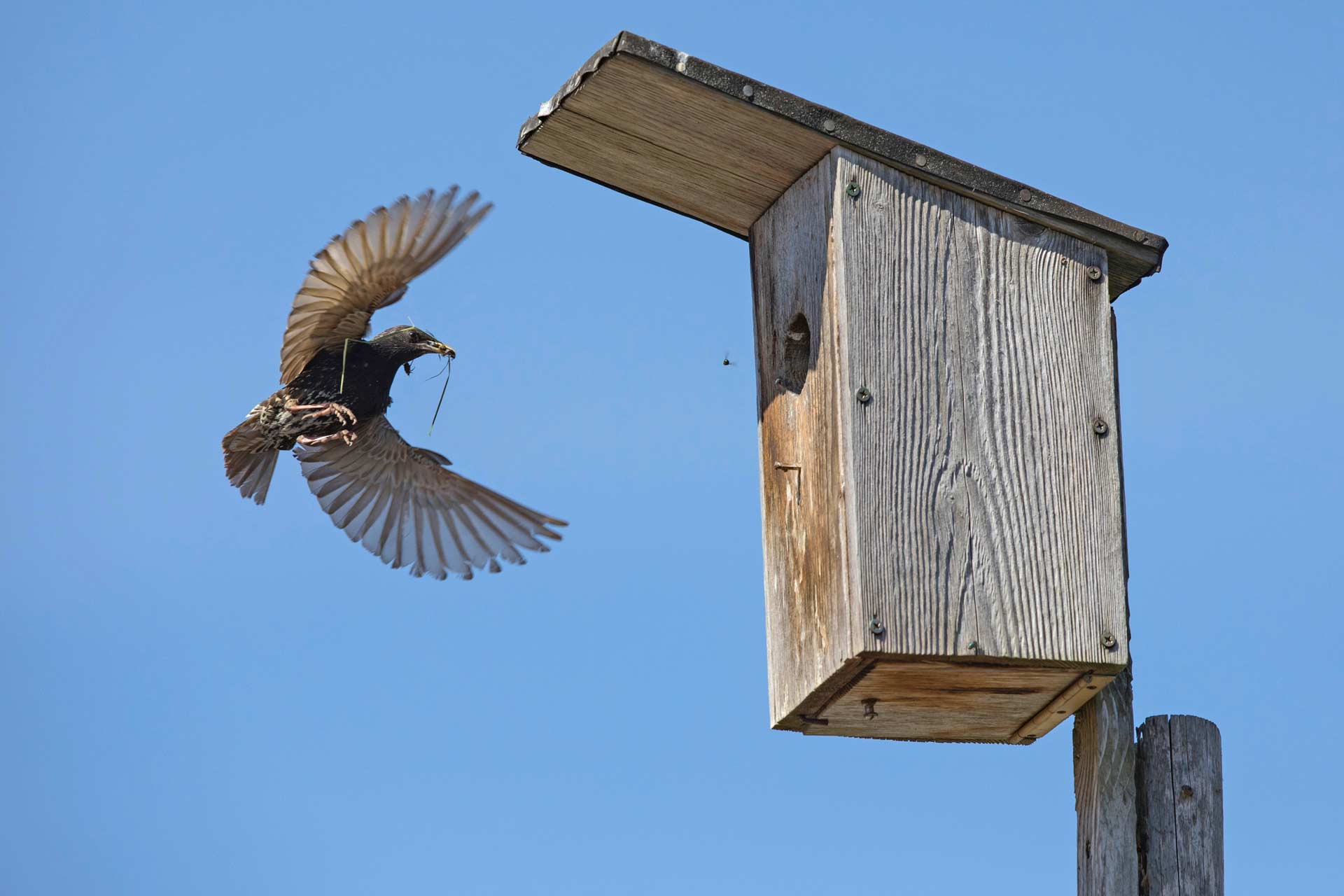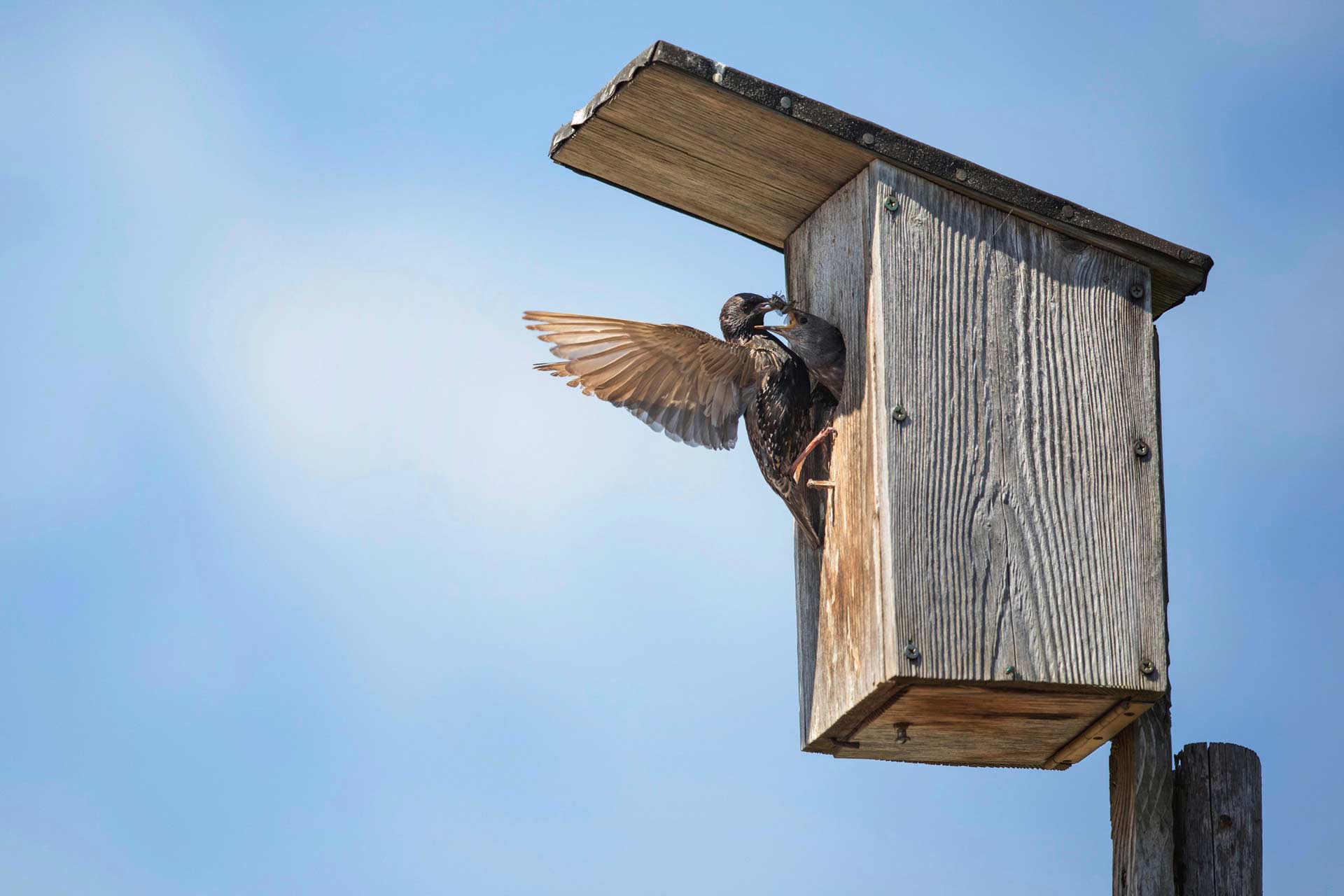Location and preparation
Spring is the time when many birds build their nests and many species are happy to be provided with nest boxes. You may have such boxes in your neighbourhood, or you may be able to provide a nesting box in your garden or on your balcony. You can find out about the requirements of different bird species on the internet.
When you start using the nesting boxes in March, observe the nesting box to see which flight path the birds use to build nests or later to feed their young. Then find a good spot from where you can see the nest.
I set up a comfortable chair on the balcony with a side view of the nest box.
Camera equipment
Depending on how far away the nest is, choose a lens with a long focal length. You should not get too close to the nest box to avoid frightening the birds. The new compact super-telephoto lenses RF 600mm F11 IS STM and RF 800mm F11 IS STM are ideal. The RF 100-500mm F4.5-7.1 IS USM is also recommended.
For EOS DSLRs, the EF 70-300mm F4-5.6 IS II USM or EF 100-400mm F4.5-5.6 IS II USM are good choices.
When composing, make sure that the nest box is at the edge of the frame, leaving enough space on the other side for pictures during take-off and approach.
Camera settings
- Select the Tv (aperture priority) mode.
- Select a short exposure time, e.g. 1/2,000 or 1/4,000 second.
- Set automatic ISO
- Select continuous shooting and One-shot autofocus mode
Some of you may be wondering why you don't set the AI Servo AF mode for a moving subject. Quite simply, the bird is moving so fast that there is little chance of catching it in flight. So we set the camera to a single AF point, which focuses on the nesting box. For the more comfort-loving photographers, the camera can be placed on a tripod.
Now you can take your time looking for the bird and - as soon as it flies towards the nest box - start the burst of shots. This is an easy and convenient way to capture action-packed flight shots. If the focus range is not deep enough to get the bird in focus, switch to M mode and select a smaller aperture. With the RF-Superteles, the depth of field at aperture 11 is ideal for such scenes.



